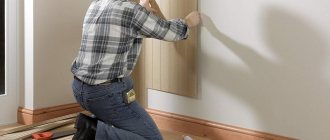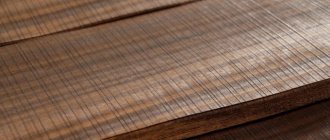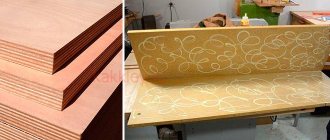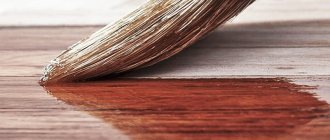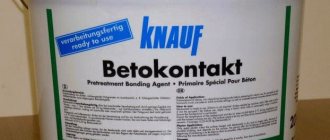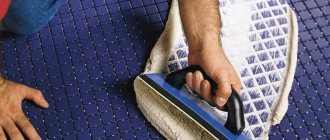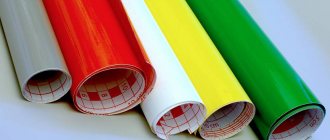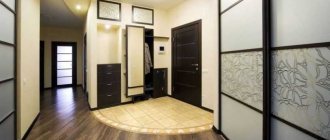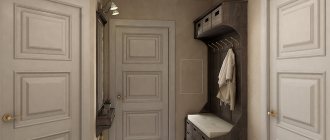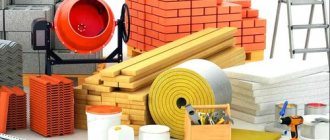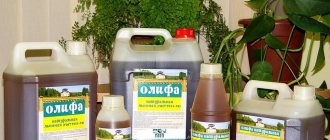The average consumption of base glue is from 1 to 3.5 kilograms with a layer thickness of 1 mm per square meter. The main rule: never buy adhesive unless you have already chosen the tile and assessed the surface. The exact numbers depend on the unevenness, characteristics of the material and installation method. We talk about the nuances and figure out how to calculate the consumption of tile adhesive in kg per m2 so that the tiles stick well and you don’t have to pay extra.
Collection Gauss / Gauss
Types of tile adhesive
There are only three types of tile adhesives on sale: dispersion, cement and epoxy.
Each of them has its own individual characteristics. Dispersive. Used for laying tiles of small thickness. Basically, it is taken by people who are far from repair work, since it is sold in a ready-to-use form.
The basis of this product is resin. The adhesive composition has such properties as plasticity, viscosity, strength. In addition, it is quite economical to use: glue consumption per 1 m² is minimal.
Glue also has a negative side: poor waterproofing qualities.
Cement. This glue is especially popular due to its ease of use, efficiency and low price. In addition, it can be used to glue tiles even in places where it looks problematic, and dismantling is very easy with minimal losses. The most common representatives of this category of glue are Unis, Ceresit, Hercules and EK.
The basis of this adhesive composition is cement. To obtain the required amount of adhesive, it is necessary to mix the cement component and water. The use of latex additives is also permitted. The consumption of this category of glue is no more than 1.9 kg per 1 m² with a layer thickness of 1 mm.
Epoxy. Preparing the composition of this glue is not easy, so it is used mainly by experienced builders. The composition of the adhesive is resin and catalyst. The liquid resin solution is mixed with a catalyst, which gives the desired effect. Well-known brands in this category include Ceresit, Litokol and Lugato.
Among the positive properties of this glue, we can note water resistance, strength, elasticity, is not afraid of temperature fluctuations, does not become cracked, adheres well to the surface and does not shrink. Among other things, the glue has an affordable price.
Which glue to choose?
There are three types of glue mixtures
- Cement based – cement with additives diluted with water or latex additive. The most popular and economical option. The consumption of this glue will be from 1 to 1.9 kilograms per 1 m2 when applying glue 1 mm thick.
- Dispersion type is a liquid mixture based on resin.
- The epoxy type is a mixture of liquid resin and catalyst, as a result of a chemical reaction you get an adhesive solution. It adheres well to the surface, is not subject to cracking and does not shrink.
Taking into account the dimensions of the tiles
The adhesive consumption depends on the dimensions of the tile. So, the larger the tile area, the more glue is used. For small tiles, up to 10X10 cm in size, cement adhesive when applying a thin layer of adhesive requires 2mm less. If the sides of the tile are from 20 to 30 cm, then the glue is applied with a thickness of 2-3.5 mm. If the thickness of the tile is 30×30 to 50×50, then the layer is applied approximately 3.5 to 4.5. And if the tile is large, then the layer is applied in a layer of 4 - 5 mm. The back side of the tile is also lubricated with glue.
Spatula dimensions and thickness of applied glue
The glue packaging does not indicate the thickness of the glue applied, but indicates the size of the teeth. Let's give an example: spatula 8, used for tiles 30x30 cm.
If the tile has dimensions of 50x50 cm, then use a spatula 12. After all, it is impossible to measure the thickness of the adhesive applied to the tile. Even if you apply a layer of glue evenly, it will only be visually smooth. Due to the fact that the glue is applied unevenly, the tiles may not last long.
Manufacturers advise first applying glue with the side of the spatula where there are no teeth, and then with the serrated side.
Spatulas are produced with tooth sizes of 6, 8, 12 mm. Every glue manufacturer knows its properties and the exact layer, it won’t be difficult to find out.
On the packaging of each glue, the manufacturer indicates the consumption in kilograms, this depends on the type of spatula.
Let's give an example: Ceresit CM12 glue, tiles measuring 30x30 cm, it is recommended to use a spatula with 10 mm teeth. In this case, the glue consumption is 4.2 kg per m2.
Just don’t think that if you take a spatula with 8 mm teeth, the glue layer will be 8 mm. Of course not. This is the height of the ridges of the spatula that you ran at a 90 degree angle. If you move the spatula at an angle, the initial height should be less, and when the tiles are laid, the glue will be distributed over the entire area. The adhesive layer varies from 0.3 to 0.5 the size of the spatula teeth. If you use a spatula with 8 mm teeth, the thickness of the glue will be approximately 2.4 - 4 mm.
Composition and brand of glue
The composition of the glue depends on different brands; they come with different additives. The density of the glue depends on this, that is, 25 kg bags contain different volumes of material, so the material is consumed differently. In order for the calculation of glue consumption to be accurate, you need to know the name and manufacturer.
Tile size
Another sign that you must pay attention to when choosing tile adhesive is the size of the facing material (tile).
If, for example, we consider a tile measuring 10 * 10, then we can see a pattern in the proportions of the solution, i.e. For this size of material you will need glue 2 mm thick. Or 4 mm if the tile is 20*30 or 50*50 mm in size.
Important! There is also a recommended layer of adhesive for attaching ceramic tiles. You can find out more in the instructions.
Calculation methods
There are many ways to calculate the required amount of glue. Let's look at each of them.
Using formulas
There is nothing difficult in this calculation: using the initial data, calculating the required amount of glue will not be difficult.
You need to know: the dimensions of your tiles and the area covered by the tiles. Now you need to divide these two quantities, that is, the coverage by the area of the tile.
Let's consider the calculation using the example of 10x10 porcelain stoneware. Its area is 100 cm². Then for 1 m² you will need 100 pieces of this tile (10000:100). 2 mm is the thickness of the layer, and the entire package of glue is 1.3 kg. Then we multiply these two values and get the final result: 2.6 kg per 1 m2 of surface. If the cladding of a room is 20 m², then you will need 52 kg of glue for the entire room.
The size and type of veneering ceramics matter
As a rule, when covering surfaces with ceramic tiles, they are guided by the following rule - the larger the tile, the thicker the layer of mortar is required. For example, on a flat surface, for samples measuring 100x100 mm, a total layer thickness (between the tile and the base) of 2 mm will be required, and for a tile 500x500 mm, a layer of about 5 mm thick will be required on the base and a millimeter layer on the back of the ceramic itself.
Also, when calculating, it is necessary to take into account the type of tile. Due to its high porosity, handmade tiles absorb glue better than standard tiles. In addition, designer types of tiles often have a very uneven back surface, which also increases glue consumption.
Grout adhesive EK-8000 KAMIN
To prevent the influence of these factors on glue consumption from being critical, it is recommended to use special adhesive compositions. For example, the composition “EK-6000 MOZAIK” is used for laying mosaics, and the adhesive “EK-8000 KAMIN” is used for heat-resistant tiles. And for tiling and porcelain tiles, the universal product is “EK-3000”, which is strong and durable.
Hercules adhesive mixtures are not inferior to them in functionality and quality; they have a higher consumption rate per square meter. meter of which is compensated by excellent strength, durability and durability.
Ready calculations
For the most common types of glue, there are ready-made calculations of consumption per 1 square meter. For consumer convenience, manufacturers often post this information in the instructions for the adhesive composition or on their websites:
- Ceresit glue has a consumption of 1.4 to 1.65 kg per layer of adhesive composition 1 mm thick.
- Russian-made Hercules glue has a consumption of 1.5 kg per 1 millimeter of layer.
- Litokol adhesive composition per 1 mm layer has a consumption of 1.3 to one and a half kilograms per 1 square meter.
- Tile adhesive "Unis Plus" has one of the most economical consumption rates. From 1 kg to 1.2 kg for a layer of 1 mm.
What affects the consumption of tile adhesive
In order to calculate the rate of glue consumption per 1 m2, you need to pay attention to a number of related characteristics:
- the surface on which the tiles are laid (this can be cement, plaster, concrete coating);
- total area of the facing surface;
- surface type: horizontal (floor) or vertical (wall);
- dimensions of one copy of the facing material (length, width, height);
- tile category (porcelain tiles, tiles, PVC);
- features of tile operation, its purpose in a specific room and permissible load;
- width of the spatula teeth for laying the mixture;
- brand of tile adhesive;
- hardening time.
Size and type of tiles
To calculate the amount of glue, the size, weight and type of tile covering are taken into account. The larger and more massive the cladding elements, the thicker the adhesive layer must be applied. If for a 20x20 tile the optimal layer is 3 mm, then for a 40x40 tile you cannot do without a layer of 4 or 5 mm.
The material from which the tiles are made also affects the consumption of glue. This indicator is also worth taking into account, despite the fact that manufacturers indicate an average value. In fact, laying tiles requires a larger amount of mixture than when facing surfaces with porcelain stoneware.
The glue is practically not absorbed into the latter, so a minimal amount of solution is sufficient for its installation. Uneven and porous materials, on the contrary, require the application of a thicker layer of material and in this case the glue must be purchased in excess.
Tile laying technology
In the process of laying ceramic tiles, a very important step is preparing the base, which includes:
- alignment;
- padding.
On a properly prepared surface there should be no differences, grooves, or cracks. Correctly calculating the glue consumption when laying facing material on an uneven surface is very problematic. To eliminate differences, you will have to apply a thick layer of glue, due to which its consumption will increase significantly.
Much more glue will be removed if the base has a strong ability to absorb moisture. Water-based glue will have to be applied in a thick layer to compensate for absorption. That is why priming is an integral stage of the cladding process, which allows you to strengthen the surface and limit material consumption.
What tools are needed for the job?
And, of course, another important point that is worth paying attention to is the set of tools necessary for fastening the facing material. If you take a mosaic, then you need a wavy spatula. Since the material requires a small amount of solution.
- Glazed tiles require a spatula with grooves up to 8*8 mm. And for ceramics they take the same tool, but with a size of 10*10 mm.
- Also, when working with cladding, look at the angle of inclination of the tool to facilitate the work of the master and reduce glue consumption.
- The market offers many different comb shapes. These can be triangular, square, round and rectangular canvases. It all depends on the type of facing tile.
Advice! The adhesive is applied to the surface of the tile over its entire surface. This is exactly what spatulas are for.
How to calculate glue consumption depending on brand
As mentioned above, types of tiles of different characteristics, material and quality composition are used for premises for different purposes: for the street, home and industrial premises; floor and wall; large and small; tiles, ceramics, stone, PVC; for the bathroom, kitchen, swimming pool, hallway, etc. Let's consider the most popular brands of adhesive mixtures and their consumption rates.
Depending on the manufacturer, the glue can be different: epoxy, dispersion and cement.
- Epoxy adhesive on sale comes in two components: resin and catalyst, which must be mixed before starting work. When using this type, experienced finishers should be invited to do the facing work. The advantages of this type of glue are strength and water resistance, as well as resistance to temperature changes and lack of shrinkage even under significant loads. The most famous brands are Litokol and Lugato. The consumption of these brands is 1.5 kg per 1 m2.
- Dispersion adhesive is a ready-made composition that does not require preparatory mixing procedures. The advantages of this resin-based adhesive are its affordable price, ease of installation, viscosity, and strength. However, there is also a significant disadvantage - poor waterproofing properties.
- Cement glue is a dry mixture that is pre-mixed with water before starting work. This is the most inexpensive option, however, an inexperienced master in this case risks making a mistake with the proportions, and then the resulting mixture may lose its fixing properties. The advantage of this type, in addition to the attractive price, is also the ease of dismantling. Among the representatives of this type of glue are the brands “Unis”, “Ceresit”, “Hercules” and “EK”. The consumption of these brands of glue is more than 2 kg per 1 square meter with a layer thickness of 1 mm. In particular, “Unit Granite” and “Unis Plus” have a consumption of 3.5 kg of adhesive per 1 square when using a No. 6 spatula. One square meter of EK brand glue surface will require only 2.5 kg when working with a comb of the same size.
Depending on the characteristics of the facing surface, glue consumption may also vary. So, for a cement or concrete floor, when using a trowel with a tooth height of 8 mm, you will need 5 kg of adhesive mixture per square meter, since the floor is subject to higher loads. To separate walls made of plasterboard and plaster, you will need much less adhesive composition - up to 2 kg per 1 m2, using a spatula No. “6”.
Prepare the solution in rational portions
The so-called “lifetime” of the adhesive solution, subject to periodic stirring and depending on the outside temperature, is approximately 3-3.5 hours. Therefore, you need to avoid mixing the solution “with a reserve”, which after 3 hours will either harden or lose some of its properties.
Before starting cooking, keep all materials at room temperature for some time.
It is advisable to clean the seams between the tiles from the adhesive mortar directly during the laying process, which will simplify the cleaning process itself and allow you to reuse the removed mortar for gluing the tiles.
Average glue consumption rate for famous brands
Average glue consumption rate for famous brands
Yunis Plus tile adhesive is a universal product, as it can be used to glue a wide range of facing materials:
- Tile.
- Mosaic.
- Natural stone.
- Porcelain tiles.
Consumption: 2.32 kg/sq.m. with a layer thickness of 2mm.
Prospectors use glue for interior and exterior decoration of walls and floors, regardless of the humidity level.
Consumption from 3 to 4 kg/sq.m.
EK-3000 glue is applied only in a thin layer, but is applicable for many building and facing materials and types of work. It is used for ceramic tiles, wall and floor tiles, has good adhesion to any surface, is resistant to temperature changes, has long-term operation in dry rooms and with high humidity concentrations.
Consumption: 2.8 kg/sq.m.
Hints
Tile adhesive, like other types of mortars, have their own preferences for working with it. Experts recommend carrying out activities with glue at temperatures from +18 to +24 C. As for low temperatures, the solution consumption can increase up to 10%.
- Also, the amount of glue purchased depends on the experience of the master.
- The more qualified the specialist, the less solution he will need.
- Beginners are advised to take extra tile adhesive.
But, you need to take into account that the time of working with the solution is limited. Therefore, it should not be diluted a lot at once.
Factors affecting tile adhesive consumption
Often, manufacturers on the product packaging or in the instructions recommend the consumption of tile adhesive per 1 m2, based on generally standard conditions, without taking into account several important points:
- Deformation of the base surface. Unlike an ideal surface, the consumption of adhesive on an uneven part will be greater.
- Roughness of the base. Here the adhesion properties with the tile material will increase.
- Tile laying method. When pressed tightly to the surface, excess glue comes out and can be used for the next element.
- Type of facing material. If the volume or density of the product is large, more adhesive material will be required
- The area of the room requiring cladding.
- Thickness of the mixture. Each manufacturer has its own glue manufacturing technology. Companies that have a good reputation do not hide the necessary information for consumers, so all the information can be viewed on the packaging or obtained from a store consultant.
- Tools used. For each glue consistency, a specific type of spatula is used.
- Master's qualification. In any case, if a person is tiling for the first time, the consumption of tile adhesive per 1 m2 will be significantly higher, in contrast to the work of a qualified craftsman.
Summarize
In order to determine the glue consumption and how much is needed, you must first decide what material will be used and its dimensions. After this, use the calculation calculator on the manufacturer’s website and approximately know the amount of the mixture. Take the time to watch the video and photos on how to properly lay tiles and select a trowel. It’s better to do everything well the first time, wasting a couple of days studying it, than to live with a poor-quality result later. You can also chat on thematic forums, where real professionals and beginners will answer you. Perhaps they will save you from some troubles and pitfalls.
Good luck and success in the renovation!
How to reduce consumption and save on materials
If you plan to purchase expensive glue, and the surface area is large, you can try to reduce costs. To do this, you need to take into account a number of tips:
- the rough base is carefully leveled, and it is advisable to ensure that the difference in levels is less than the permissible limit - up to 3 mm;
- to level the floor/walls, it is recommended to use building compounds rather than an adhesive mixture;
- before installation, rough surfaces should be treated with a primer, which will reduce the absorbency of the base materials;
- if there are no installation recommendations, glue is applied only to one surface: tile or rough;
- During the installation process, two tools are used: first, the mixture is leveled with a smooth spatula, then the excess is removed and grooves are formed using a serrated tool;
- recommended room temperature: +18…+24°;
- you need to prepare the solution correctly if you purchase a dry mixture;
- the thickness of the adhesive layer must correspond to that recommended for tiles with given dimensions;
- If possible, you should choose a non-porous finishing material;
- When laying, you need to check the position of the products with a building level, which will allow you to use the mixture evenly.
